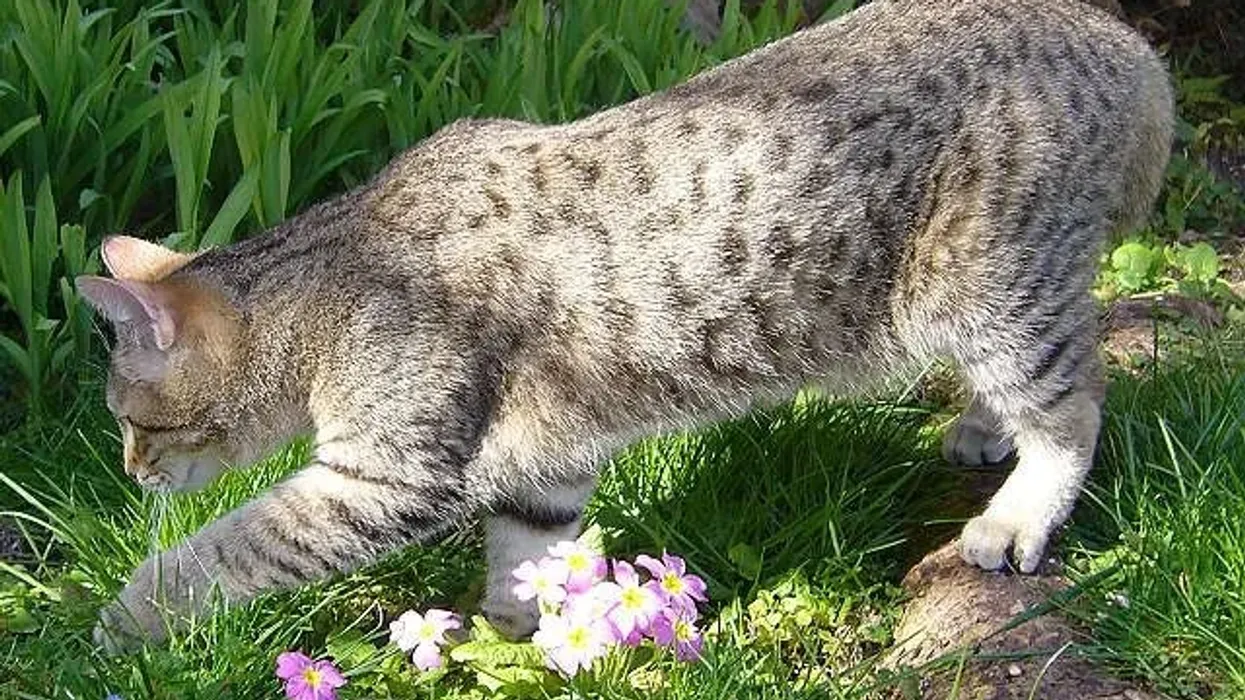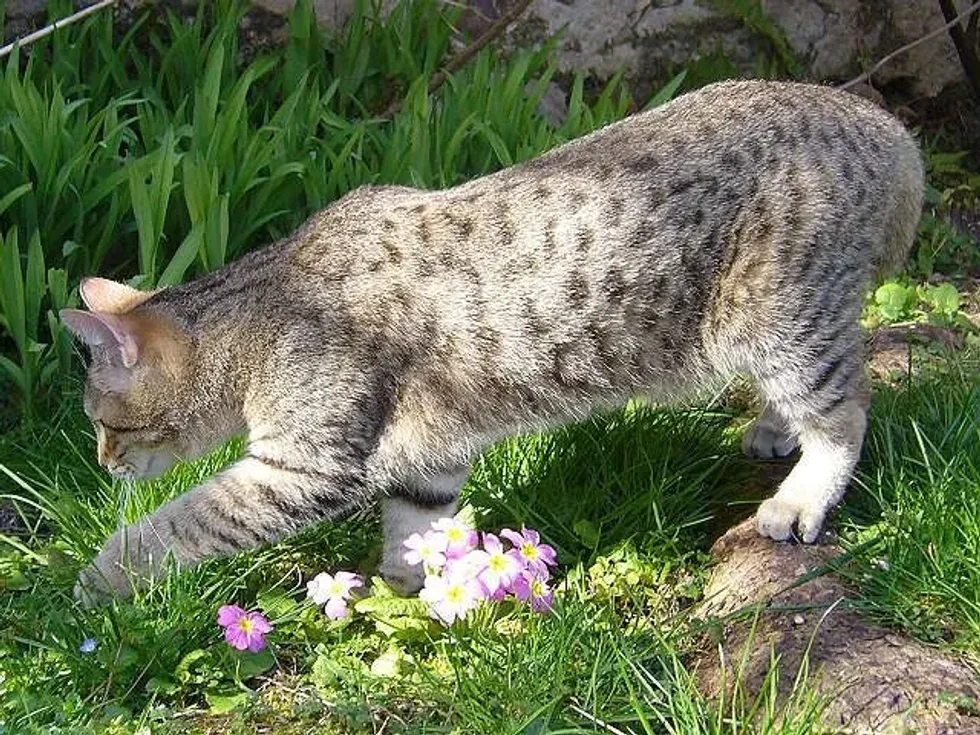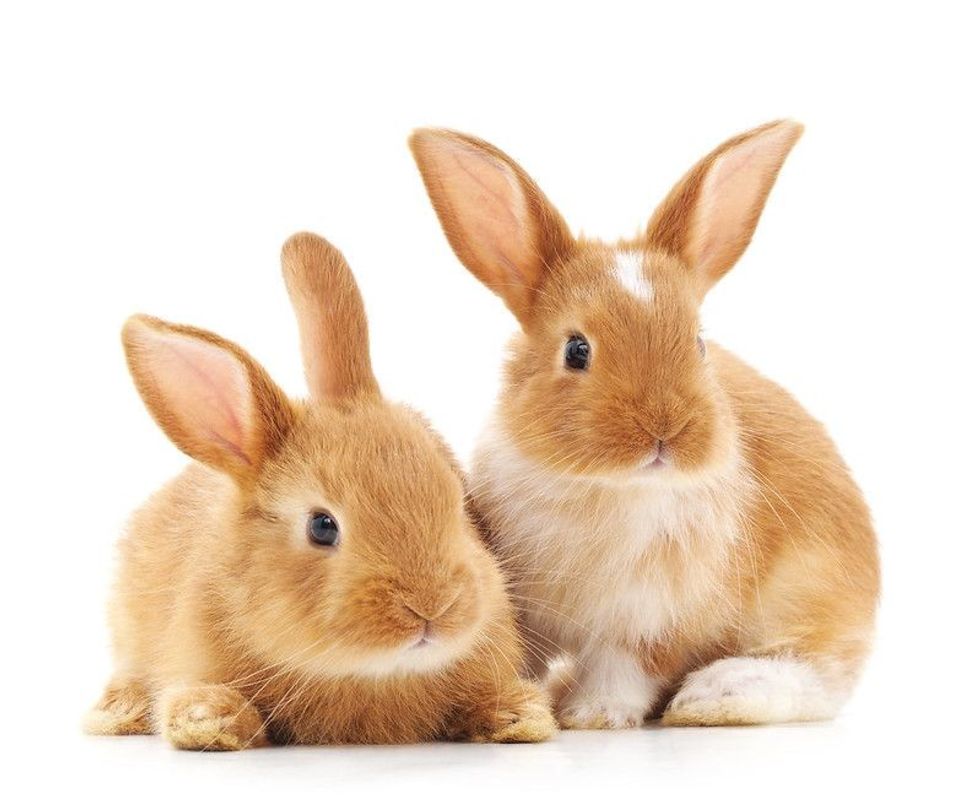Pixiebob cats are one of the most intelligent and friendly domestic cat breeds. These brown-spotted tabby cats usually have a mild personality.
The coat of a Pixiebob cat is thick and it can be both short and long and the coat also has a woolly feel to it. This American cat also doesn't need much grooming as weekly brushing and trimming of the nails is sufficient.
Their paws have black skin and fur and these bobtailed cats have knotted or kinked tails.
This bobbed tail is one of the most distinguishable features that this cat has. These cats love their family members, including other pets in the household.
It is assumed that this cat originated from a wild bobcat, but no concrete proof has been found. The kittens or the cats of this breed don't have many health problems, but keeping an eye on their health is very important to make sure they live a happy, full, and long life.
Read on to know more about the Pixiebob cat, and if you like this article, then check out our articles on Balinese cats and Siamese cats.
Pixiebob Interesting Facts
What type of animal is a Pixiebob?
The Pixiebob is a kind of domestic cat breed.
What class of animal does a Pixiebob belong to?
Pixiebob cat belongs to the class Mammalia of animals.
How many Pixiebobs are there in the world?
A Pixiebob cat lives in households where a large number of these cats are also bred. The rest of the population of Pixiebobs is bred by many breeders around the world. This means that the exact number of the population of Pixiebob is not known.
Where does a Pixiebob live?
These cats were first bred by a woman in the '80s in Washington State in the United States. She started breeding more cats of this breed as she noticed the first cat looked distinctive and unique.
Since this new breed was first found, this cat has gained global popularity and can now be seen in many homes around the world except Antarctica. The exact geographical ranges of this cat breed are not known as they live in households in many different countries.
What is a Pixiebob's habitat?
The parents of a Pixiebob are thought to be a pet cat and a wild bobcat. Even though it has not been proven, Pixiebobs do closely resemble American bobcats.
American bobcats may be wild animals but these domesticated cats have been living with humans since the day they were first bred. They are widely known to live in households and they can live in almost all climates and regions.
Who does Pixiebobs live with?
Since the day this cat was first bred, Pixiebob cats have lived with humans. They are known to get along pretty well with children, and other household pets, and make fast bonds with their families.
How long does a Pixiebob live?
The lifespan of a Pixiebob is about 13 to 15 years when they are healthy. These cats are a wonderfully healthy breed and they don't have any breed-related disease either.
However, it is important to look out for general cat-related health issues to make sure your cat is healthy and lives a long life. Health issues this cat may face include kidney disease or heart disease.
Cats who are more than 10 years of age can also develop arthritis throughout their body.
Cats don't create a lot of fuss if they are in pain so, you might not know that they are suffering from any health problems. A regular check-up with the vet is required to help them live a happy and long life.
How do they reproduce?
It's better to breed cats under the supervision of a vet or an expert breeder, but if you do want to breed these cats, then you would need to know their habits and cycles. The breeding season for Pixiebobs is around winter to early spring, particularly in February and March.
Both males and females should not be taken for breeding until they are about two years of age. They might reach sexual maturity before this age but it is healthier to breed them after they reach two years of age.
The estrous cycle for a female Pixiebob is about 44 days.
The gestation period for these cats is about 60 to 66 days, and after that around one to six kittens are born. Pixiebob kittens are taken care of by their mother.
What is their conservation status?
The conservation status of the Pixiebob cat breed is Not Evaluated under the International Union for Conservation of Nature. These cats are bred in large numbers in households and at breeders and they don't face any great threats. We can assume that their population is not endangered at this moment.
Pixiebob Fun Facts
What does Pixiebobs look like?
A Pixiebob cat looks a lot like a wild bobcat. They are muscular, athletic, brawny, and brown spotted tabby cats.
They have pear-shaped heads with small tipped ears and black beady eyes along with gray-colored whiskers. Their eyes are usually golden brown or gooseberry green, and they have white fur around the eyes. They have two kinds of coats, long-haired and short.
Pixiebob hair can be thick consisting of a double coat and a woolly feel. These cats can be of many colors such as cinnamon, light gray, fawn, blue, tawny, or reddish-brown. Also, they have spotted patterns on their body.
A Pixiebob tail is very short, almost on the verge of nonexistent. This cat's bobbed tail is usually knotted or kinked, and flexible enough for these cats to be able to move it freely.

How cute are they?
These cats can be very cute with their wild bobcat-like features, but they are far from being wild. They have a gorgeous look to them with their spotted coat and with their cute and short tails.
They also have a more dog-like temperament rather than cat-like. They are very loyal and loving toward their owners, and they can be active and lazy. These Pixiebob characteristics make them adorable.
How do they communicate?
Cats communicate with their owners through body language and sounds. The sounds your cats make during many times of the day and for various needs will be different from each other.
You would need to habituate yourself with their calls and learn to understand what they mean by their calls. Other than that, this cat breed also communicates through body postures.
For example, when your cat stretches the front part of its body along with its forelegs with its bottoms up, this means the cat is relaxed. If your cat's standing or sitting on its hind legs and trying to catch your attention with its forelegs, your cat is in a playful mood.
How big is a Pixiebob?
Pixiebobs are large-sized cats. They are about 20-24 in (50.8-61 cm) in terms of length and 9-12 in (22.9-30.5 cm) in height when they are standing.
Maine coons are one of the largest domestic cat breeds in the world. They can sometimes be about twice the size of Pixiebob cats. Maine coons are about 19-39.4 in (48-100 cm) in terms of length and can be 10-16 in (25.4-40.6 cm) in terms of height when they are standing.
How fast can a Pixiebob run?
Pixiebobs are active cats. They can run pretty well, however, the exact speed of these cats is not known. The most distinguished feature of any cat is its ability to jump very high. They can jump five to six times their length at times.
How much does a Pixiebob weigh?
These cats weigh about 8-17 lb (3.6-7.7 kg). The weight of some Pixbiebobs can reach 25 lb (11.3 kg).
What are the male and female names of the species?
Male cats are called tomcats or toms, while there is no specific name for female cats. If a female cat has been neutered, it is called a queen in breeding terms.
What would you call a baby Pixiebob?
A baby Pixiebob is usually called a Pixiebob kitten.
What do they eat?
Pixiebobs eat all kinds of food, whether it is dry food or wet food. If you are feeding them commercial food, it is better to give them high-quality ones to make sure your cat is healthy.
This breed of cat can be reluctant to drink fluids and so, they should be given wet food to compensate for the required amount of fluid needed for their body.
They need all kinds of nutrients to make sure they grow up healthy and strong. It is important to look after the health of your cat and give them the right amount of food so that they don't become obese.
Are they aggressive?
Pixiebobs are not aggressive at all. They are rather calm and friendly and they have a more dog-like personality.
They are friendly towards children and other pets in the household. They are loyal to their owners and they want to be with you and play with you. They can be very active at times and at other times, they can be lazy and laid back too.
Would they make a good pet?
They can make very good pets for both adults and children. If you are looking for a cat who is not a couch potato and will play with your children or your other pets, then Pixiebobs are a great choice for your family.
They also don't need extreme care and grooming. Trimming the nails and brushing and combing their coat hair once a week is perfect.
Other than that, you need to regularly check and clean their ears and brush their teeth. They have a wild look but are loyal, intelligent, friendly, loving, and mild, so they usually make excellent pets.
A Pixiebob cost will cost you around $ 60-1500 USD.
Did you know...
This history of a Pixiebob started in 1986 when a woman named Carol Ann Brewer rescued a large spotted male cat with a short tail and took him home. This cat bred with her neighbor's cat and gave birth to a new breed of cat which Carol Ann Brewer gave the name Pixie.
She noticed Pixie was different, so she bred more of this breed of cat.
She went to The International Cat Association to register this cat breed. In 1994, the breed was accepted by the Association, and in 1998, the breed received championship status.
The best way to recognize a Pixiebob is by its short tail and friendly personality.
These cats are rather easy to train and your cat should find these training sessions fun
What colors do Pixiebobs come in?
These cats have thick double coats. There can be two breeds of Pixiebob cats, the Pixiebob longhair cat and the Pixiebob short-haired cat. They both have a woolly feel to them. The coat color of these cats includes cinnamon, light gray, fawn, blue, tawny, or reddish-brown.
What is special about the Pixiebob cat?
They are one of the very few cat breeds that allow polydactyl. Polydactyl is a condition that leads to having extra toes. A maximum of seven toes is allowed in this breed. Seven toes for a cat is not usual but they are accepted in this breed.
Here at Kidadl, we have carefully created lots of interesting family-friendly animal facts for everyone to discover! Learn more about some other mammals including caracal or ocelot.
You can even occupy yourself at home by drawing one on our Pixiebob cat coloring pages.









